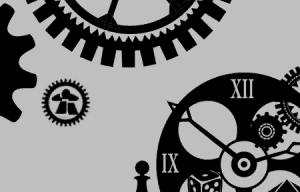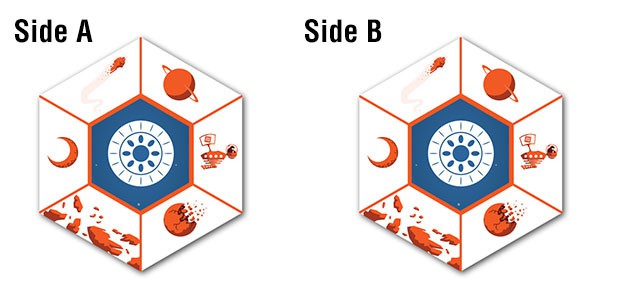
If you’re lucky enough to have had Kickstarter projects that fund in the first day or two, then you’ve never had to contend with the following problem: How do we, as creators, keep enthusiasm up before funding?
If a Backer comes in after funding, they can, usually, look at what Stretch Goal is ahead of them and immediately become enthusiastic about the challenge of getting to that goal. They’ll tell their friends, they’ll tweet and post. If they really get excited about the Stretch Goal, they’ll do what they can to help the project along. But what about before you get to Funding?
Getting funded is the first goal, but it’s a long and distant one for most projects. With Stretch Goals you can keep your audience focused on what’s next, but with funding, sometimes the goal is weeks away. You can lose attention and enthusiasm.
THAT’S WHY, NOTICING THIS EFFECT DURING OUR ASKING FOR TROBILS PROJECT, I CREATED THE MICRO-GOAL.
A Micro-Goal is: A set goal that cost little to no money to reach, but involves the creators time and effort to add to the game. The goal should be a certain amount of progress reached by a specified goal.
MICRO-GOAL EXAMPLE 1
As an example, in Asking for Trobils, we have these Ship Cards. Originally, we were going to have one side be the same as the other, but what use is that?

While looking for something to use as a Micro-Goal, I realized that I could put some original art on one side of the Ship Card.
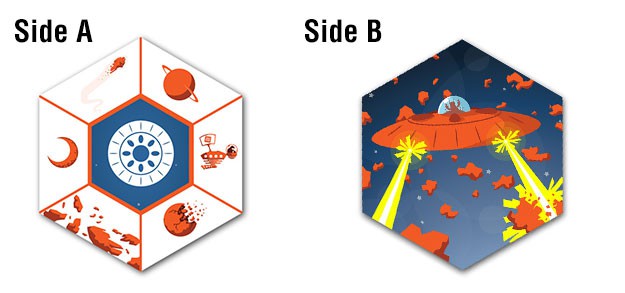
So I told my Backers that if they got us to $20,000 in three days (we were currently at about $18,000), then we could have this art. We succeeded, which of course, resulted in creating more of them.
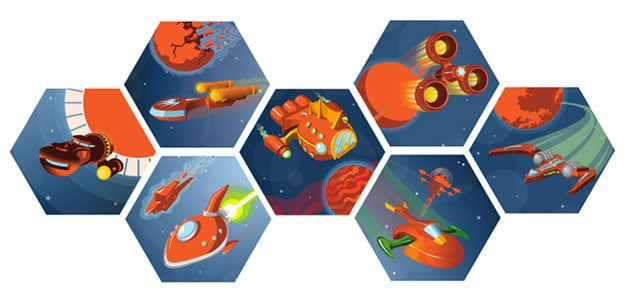
The other sides of these Ship Cards were already going to be printed. I didn’t change the price of the game at all by adding this new art because, as luck would have it, I’m also the artist. But what if, like in most projects, I weren’t? Then there’d be an added cost from the artist.
It’s up to you as a creator to ask yourself if that added cost would be worth it. You’re paying for that cost. Essentially, you’re putting your own money in. It’s much like advertising in that regard.
MICRO-GOAL EXAMPLE 2
Some Micro-Goals will cost a little money, but you can mitigate how much by being smart about your printing. Another Mini-Goal I used was changing out tokens for punchout figures in stands.
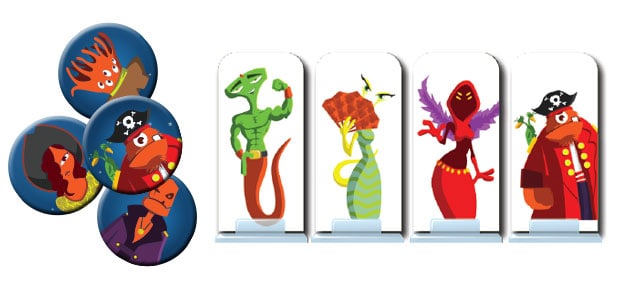
I announced that if we made $2,000 or more in 3 days, we could substitute circle punchout tokens, for stands on the board.
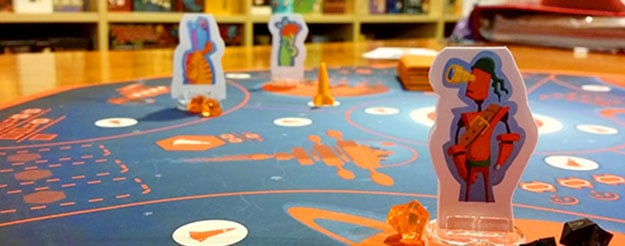
The art was already created. All I had to do was spend some time changing the cut outs on the punchboard from circular with background, to include the entire figure. I also had to pay for stands. I found out that adding 12 plastic stands to each game would cost about $0.30 a game. That adds up to $300 for a 1000 game print run. So I asked myself if I thought the attention this Micro-Goal would get was worth $300.
THE OUTCOME
It’s difficult to tell if the Micro-Goal made a difference funding-wise. I ran Micro-Goals one after another. There’s no time in between where you would see a dip because I didn’t run one, but one thing’s for sure, excitement ran through the roof. We had posts on BoardGameGeek.com and images being posted and thumbed continuously. Comments were crazy. As I may have mentioned before, we had, on average, about 43 comments a day!
BACKERS THAT CAME IN EXCITED, STAYED EXCITED.
THE PROS:
Backers were engaging and enthusiastic beyond belief. They got me even more excited about the project and game. It made the Backers feel more involved. They weren’t just funding the game, they were making it better.
Its effects on the actual game were wonderful as well. That new art and stands really added to the game. In fact, the stands helped fix one issue, the cards that originally went on the board would start to clutter the board. Now, with the stands, the game looks and feels more elegant. Micro-Goals can make you really focus how your game looks and works.
THE CONS
The work is enormous. Think of running a Kickstarter, then running a small 3 day contest right in the middle of that Kickstarter, then another after that, then another, then another. On top of that, if you’re the artist like I am, the work it took to draw those ships and change how the punchouts worked was huge. Talking back and forth to the printer to make sure you’re not taking in too much cost can get tiresome. All of these elements take a lot of time and effort, not to mention money in some cases.
What if you don’t make the Micro-Goal? The art on the backs of the Ship Cards was the first Micro-Goal, and we didn’t reach that goal successfully. We moved on to the Stands, succeeded, then came back to the Ship Card art and made it the second time. The problem with not making a Micro-Goal is, it gives off the stink of failure. Not only that, but now the Backers feel like they’re missing out on something. You never want that.
Here are some lessons we learned on how to run Micro-Goals:
- 1. Don’t run them during weekends. Our first run that failed was over a weekend and Saturdays are typically slow.
- 2. Don’t stretch too much. If you’re campaign is averaging $1,800 every 3 days on weekdays, then make the goal $2,000 for 3 days. That small stretch is attainable. Don’t try to double it.
- 3. Remember that the real payoff isn’t getting the money at the end of the goal, but gaining and keeping the enthusiasm of the Backers and making them a part of the project.
- 4. Advertise on the front page of the Kickstarter project what Micro-Goal you’re running and why. This is something we didn’t do enough of, but when we did, it was more effective.
- 5. As per my last Reflection, always create your Micro-Goals with the Backer First attitude.
In the end, keeping Backers excited is just as important as getting them; possibly more important. If, like me, you’re not at the point where you fund right away when releasing your Kickstarter, then I’d highly suggest creating Micro-Goals along the way to funding. Don’t let the Funding Goal be the only thing on the horizon for your Backers to see. Give them quick, attainable goals and they will surprise you with their enthusiasm and support.
Last Reflection: Backer’s First
Next Reflection: The Face of Success

